If I’m going to hold an EU passport I should probably learn something about cheese and wine. While in Portugal on this recent trip, I decided to try to put the cheeses in “10 Portuguese cheeses you must try” in front of an expert panel (includes two tasters aged 10 and under).
For Serra da Estrela, we got what the lady at the Continente hypermarket across from Gare do Oriente, the main train and bus station next to the public aquarium said was equivalent: Casa Matias SEIA‘s Quejinho de Ovelha (the same company also makes the cheese identified as “Serra da Estrela”; I think the nomenclature has to do with the precise fields in which the sheep graze). Kids rated this cheese “excellent”. Azeitão cheese is a more challenging flavor, but nonetheless rated “amazing” by the 10-year-old panelist.
El Corte Inglés is where a banker told me to shop for cheese. When I asked for Rabaçal, the ladies gave me the following:
I’m not sure that this is Rabaçal (might not even be the right milks), but it was a huge hit with the kids. It’s smooth and unchallenging. The opposite might be said of São Jorge, which was available aged 3 months, 4 months, 7 months, and 12 months. The cheese section lady recommended 4 months and that was rather sharp/sour/bitter.
The Queijo de Nisa, from a town to the east of Lisbon, is sharper and not as creamy as Quejinho de Ovelha. Nobody on our tasting panel liked it as much as the Serra da Estrela. Evora cheese: rejected by all (too sharp). Terrincho was rejected by the young tasters.
Here’s a cheese that isn’t on the “10 must try” list, but we loved it: Ovelha Amanteigado (“buttery soft sheep’s milk”?) from Serra Gerês. It was kept more or less at room temperature in a mini-market in the mountains near Portugal’s only national park. The consistency was more like a dip than a cheese. Everyone on our panel loved it. The web site referenced in the label below didn’t have any further information. It seems unlikely that this will show up at Publix or Whole Foods.
Here’s another cheese from the same area that we enjoyed at a restaurant, this time from cow milk:
And, to complete the circle, Serra Gerês goat cheese (excellent):
An expensive cheese at Pingo Doce that I didn’t love was Quinta do Olival. It’s a “cured” goat’s milk cheese that has won a lot of awards, but it tastes too smoky/sour (I don’t think it is actually smoked). The family was more positive regarding this one.
If you’re desperate and need some cheese that can be found in even the humblest of markets, Terra Nostra (from the Azores) proved mild and acceptable to the kids:
How about some wine to go with the cheese? Daily drinking in Portugal need not be costly. The typical bottle of wine for sale in a supermarket seemed to be 3-5 euros. We found 5 liters (6.7 bottles’ worth) in a name-brand box for 8 euros at a small town fruit market. If you’ll go through more than 5 liters between supermarket trips, here’s 10 liters for $11 (supermarket in Terras de Bouro, a mountain town named after the Buri people). That’s 13 bottles of wine for less than $1/bottle.
Garrafeira Estado d’Alma, the wine shop around the corner from our Lisbon hotel, recommended a 19-euro Syrah-based wine from south of Lisbon (i.e., not from the famous Douro region; apparently this entire Alentejano region produces excellent Tuscan-style wines):
I served it to a discriminating law firm partner and he pronounced it excellent. The wine merchant also said that Madeira wine lasts longer, once the bottle is open, than Port. If immigration hasn’t made the average European rich, it certainly seems to have helped the elite. I asked if it wasn’t damaging to leave a 6,800 euro bottle of Champagne in an upright position. Portugal is the world’s leading producer of cork and shouldn’t he realize that the cork could dry out and start letting air into the bottle? “You’re right,” he said, “but we’ll sell the bottle within about two weeks so it doesn’t matter.”
He was kind enough to take us (including the 8-year-old member of the panel) to the basement to see the 10,000 euro bottles:
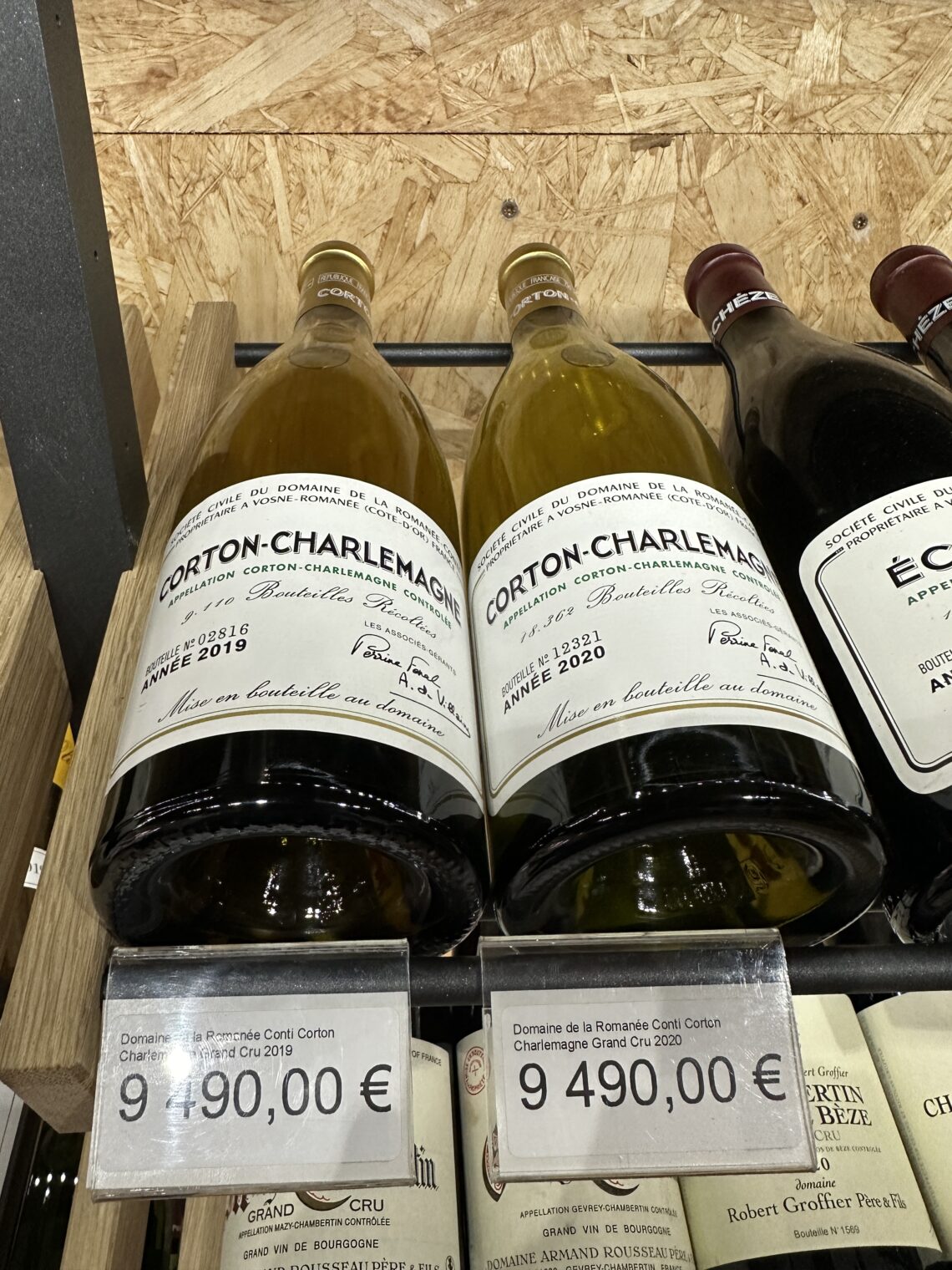
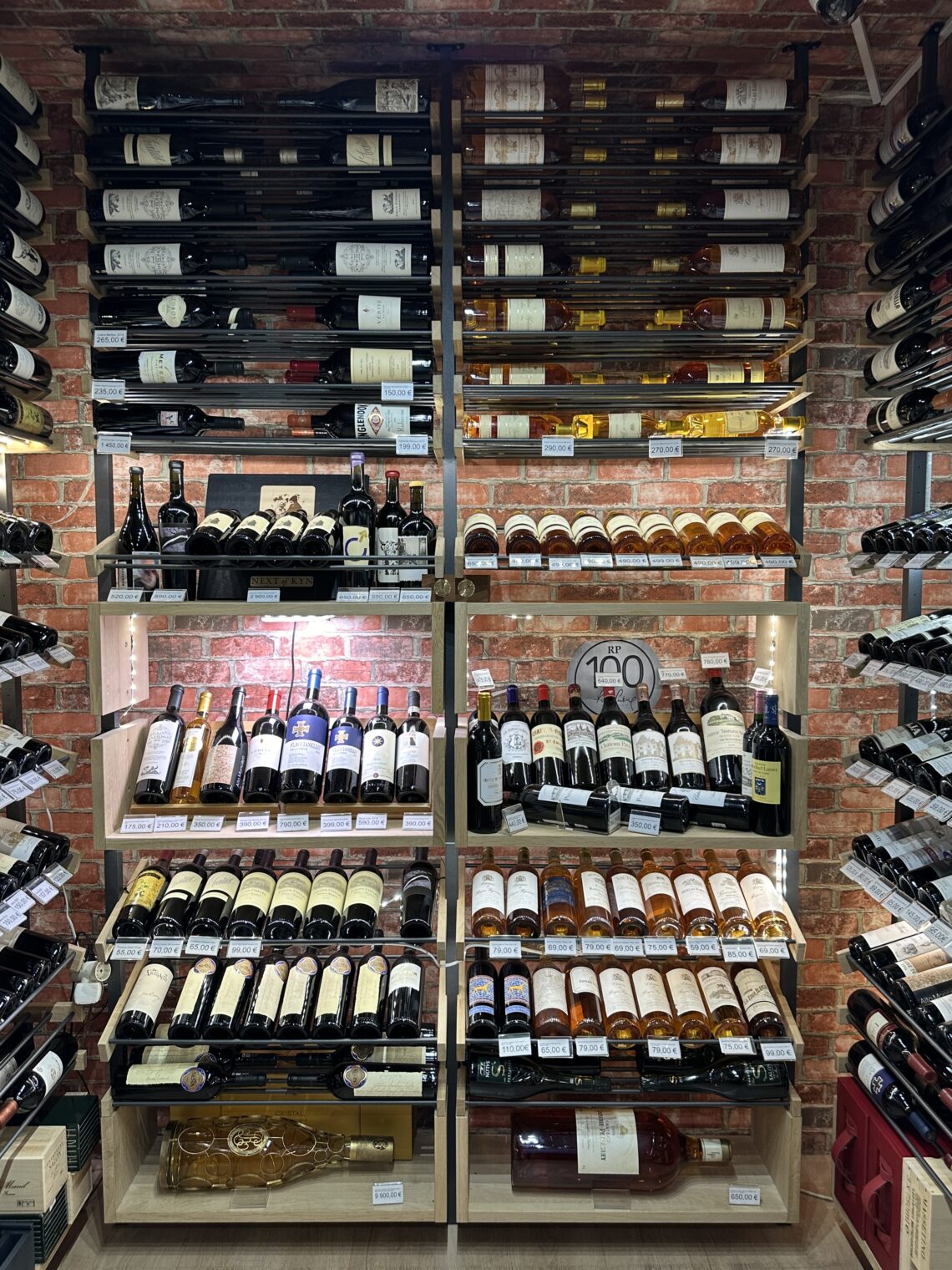

After trying about 10 more wines during the three-week trip, I concluded that I prefer Alentejo wine to Douro wine. So does IKEA, apparently because that’s what they serve at their Michelin-starred cafe in Braga:
A mid-priced Alentejo wine that I found in Continente and enjoyed is Pêra Doce. Their “premium” wine costs about $5 in Portugal and was rated 91 points in Wine Enthusiast (I found this out after tasting their $15 “special edition” wine, which was marked down to $6, so the rating did not affect my opinion).
Even allowing for the government-limited market for imported cheese here in the Land of the Free Market (TM), I can’t figure out why Portuguese cheeses and wines aren’t widely available in the U.S. I’m guessing that there is too much fragmentation. Serra Gerês cheese is good enough to compete in the American market, but probably there isn’t enough made to supply even one U.S. state. Therefore, it would be tough to get a return on investment from educating American consumers about these superb cheeses. Murray’s in NYC carries just two Portuguese cheeses, neither of which I noticed for sale in Portugal:
(the prices have to be at least 4X what these cheeses cost in the domestic market)
I guess we also do have to factor in the import barriers imposed by our government at the behest of the dairy industry (we would call them “cronies” if we were talking about a Third World country). Given these barriers maybe it makes sense to import only those cheese with which American consumers are already familiar and willing to pay a big premium.

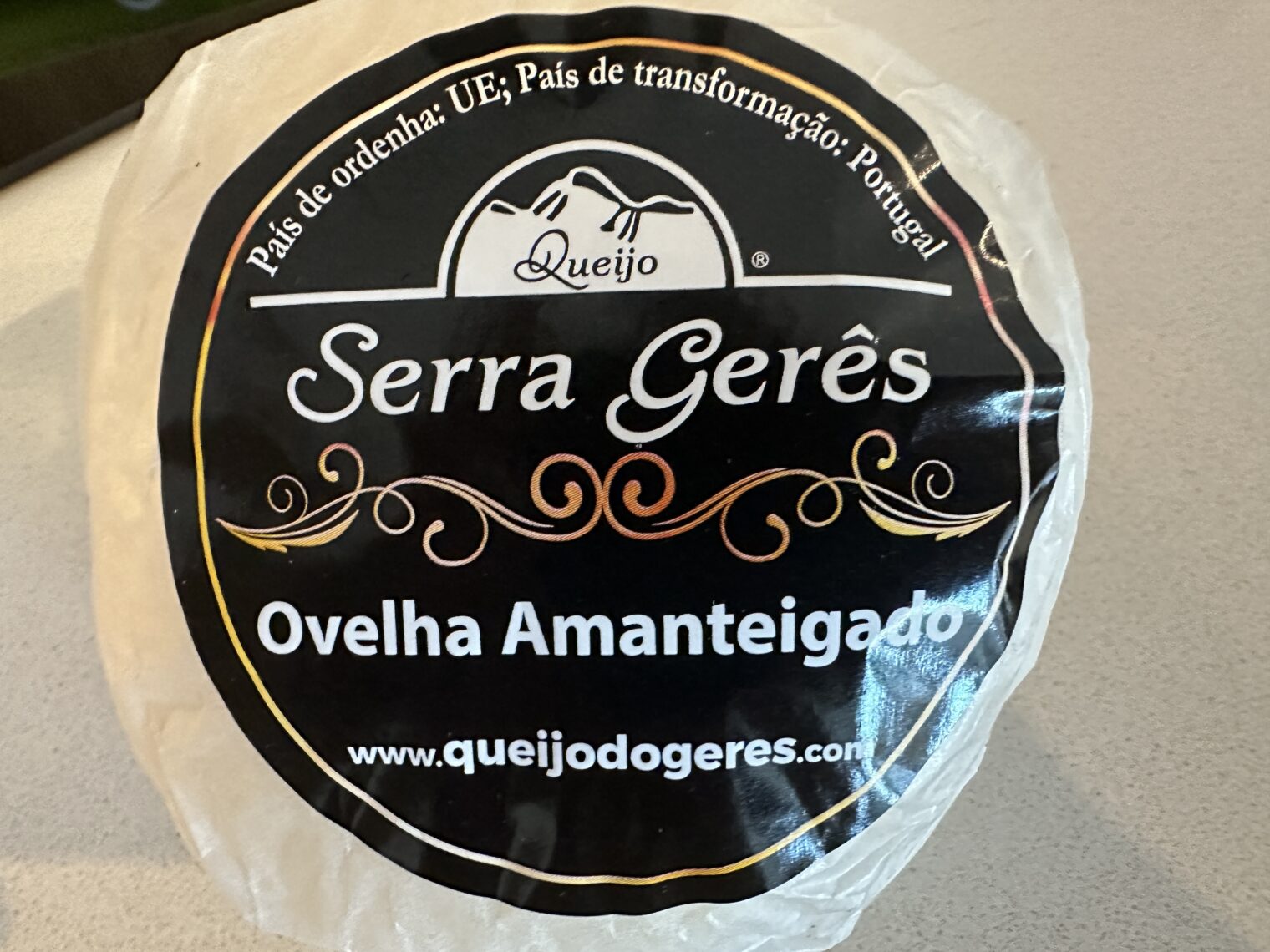

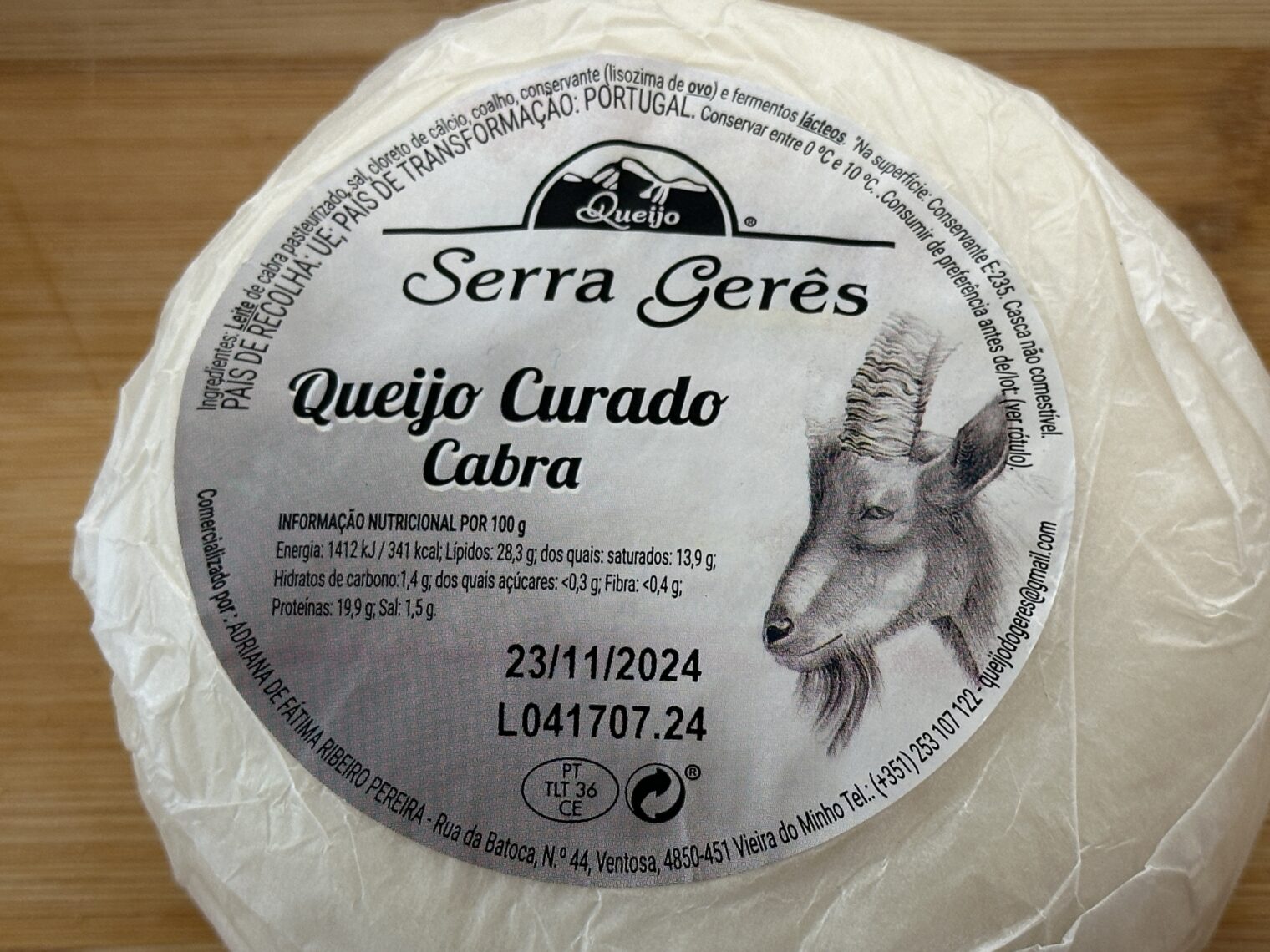
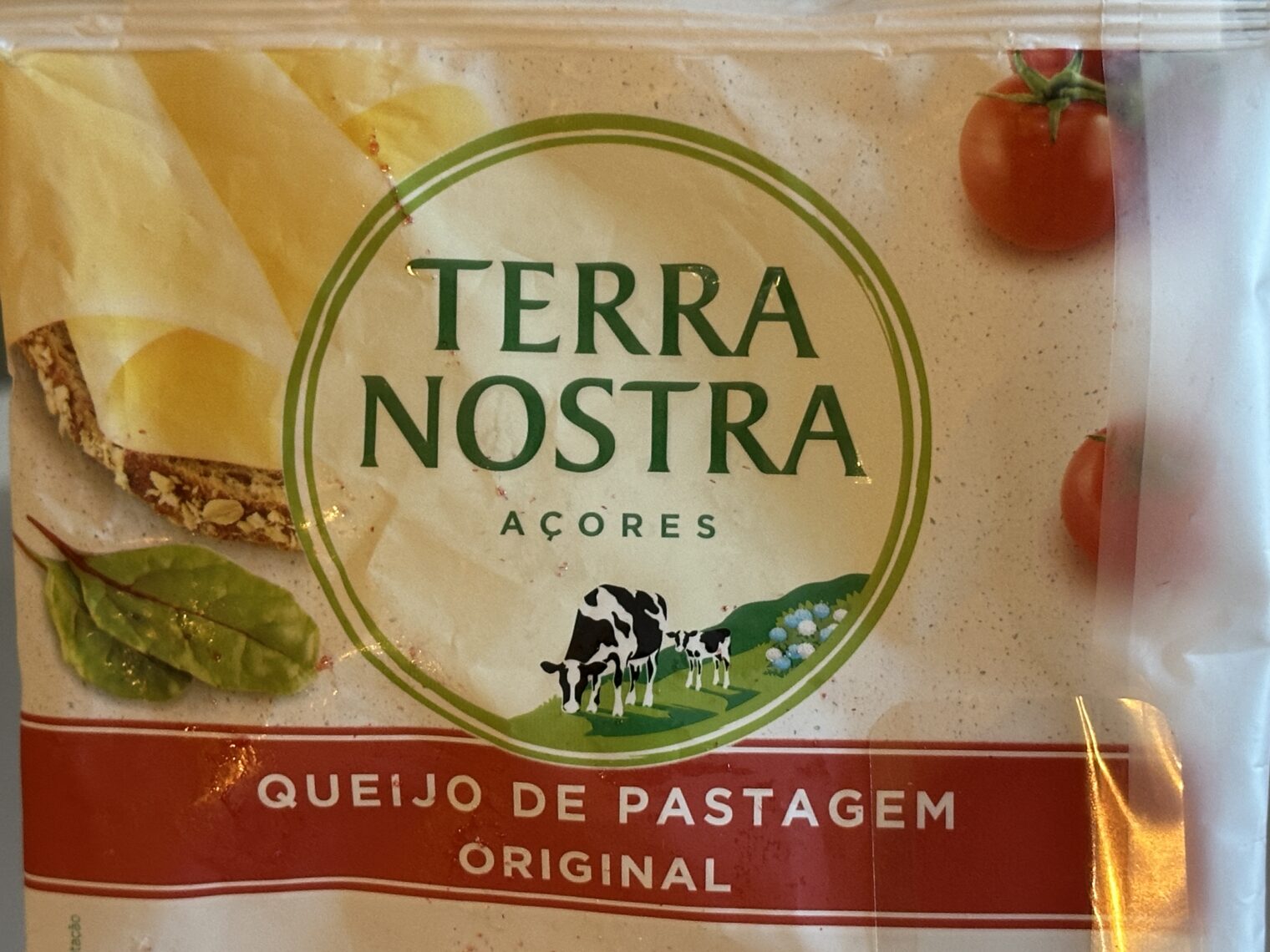
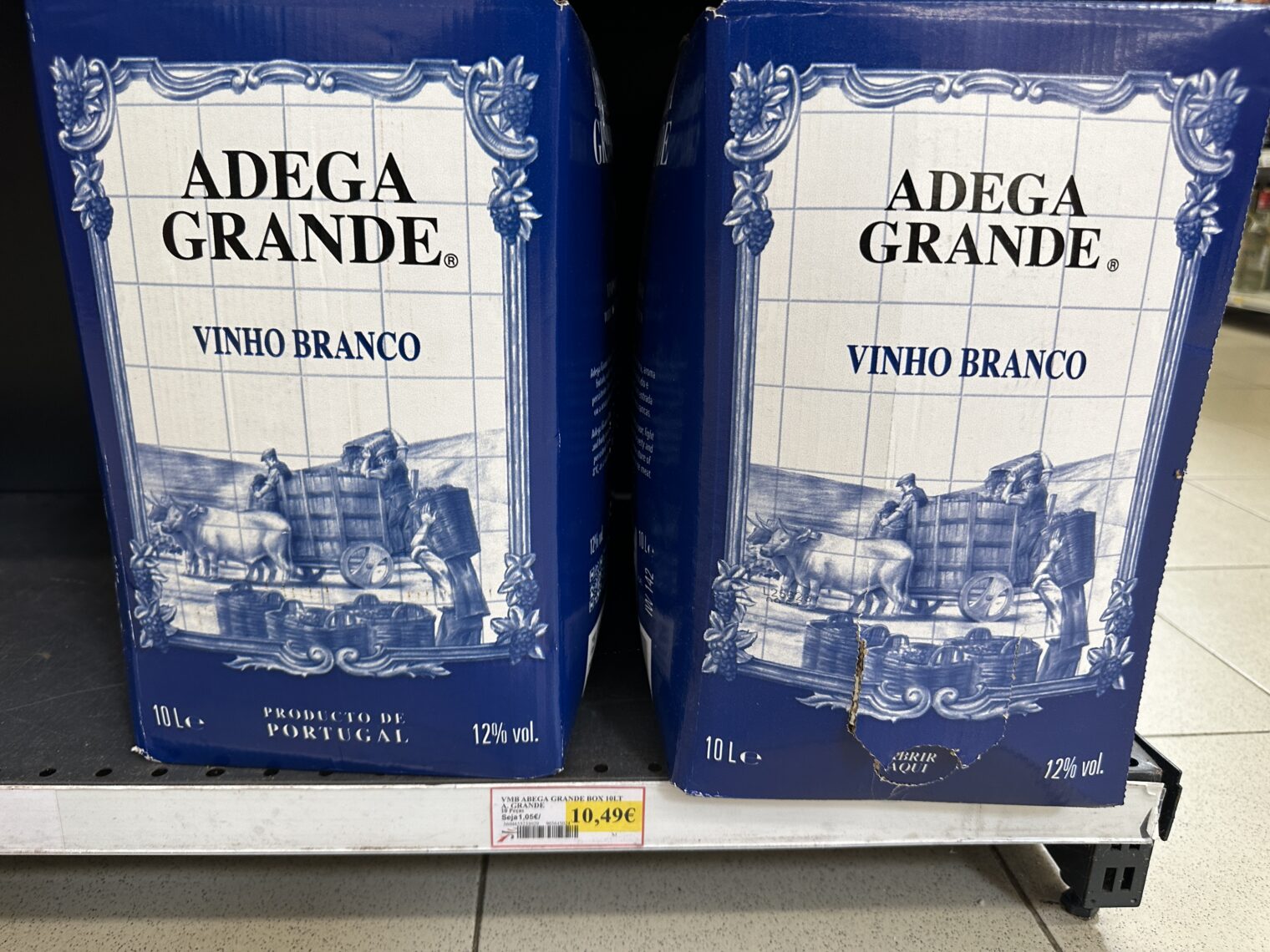
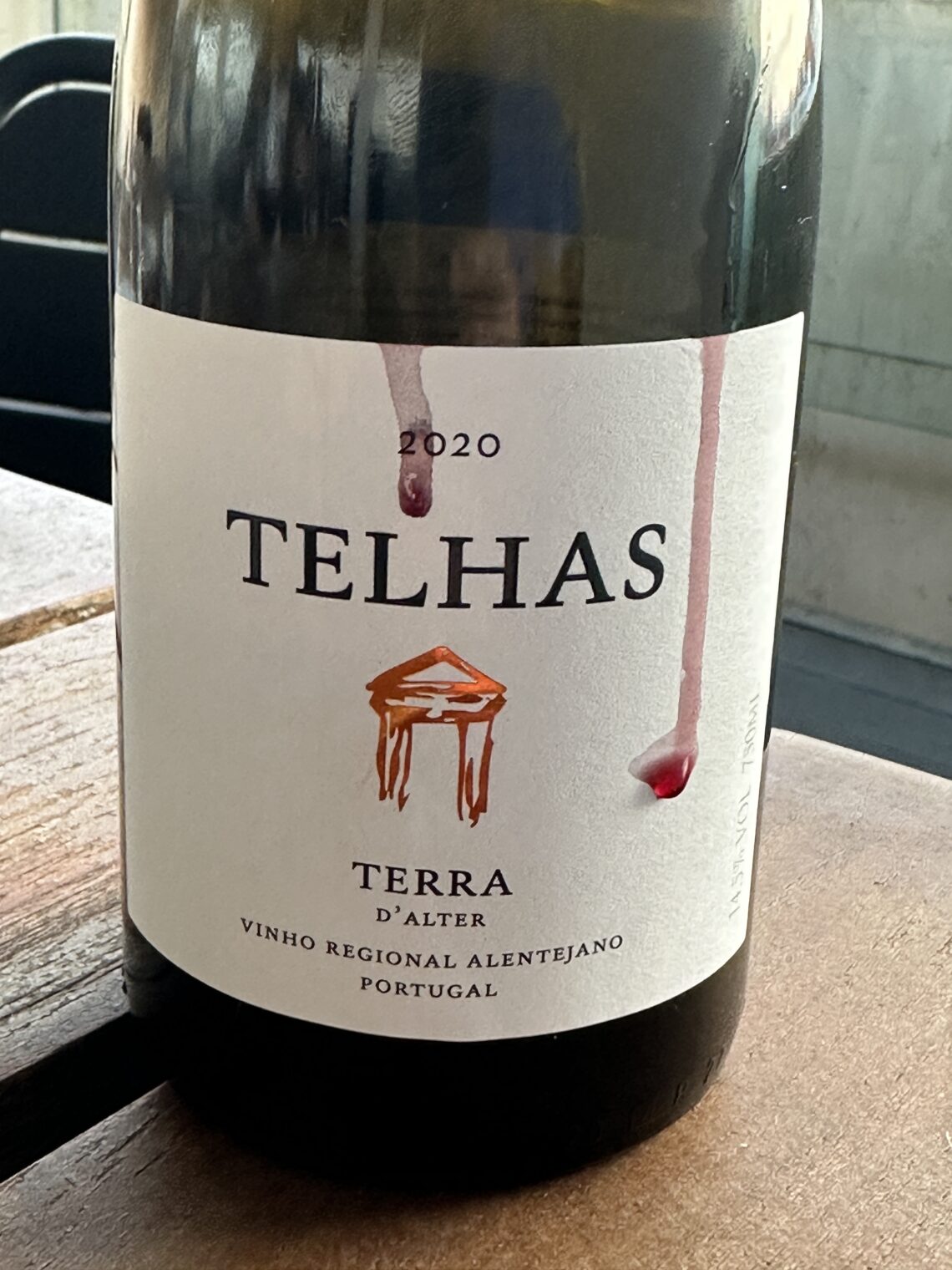
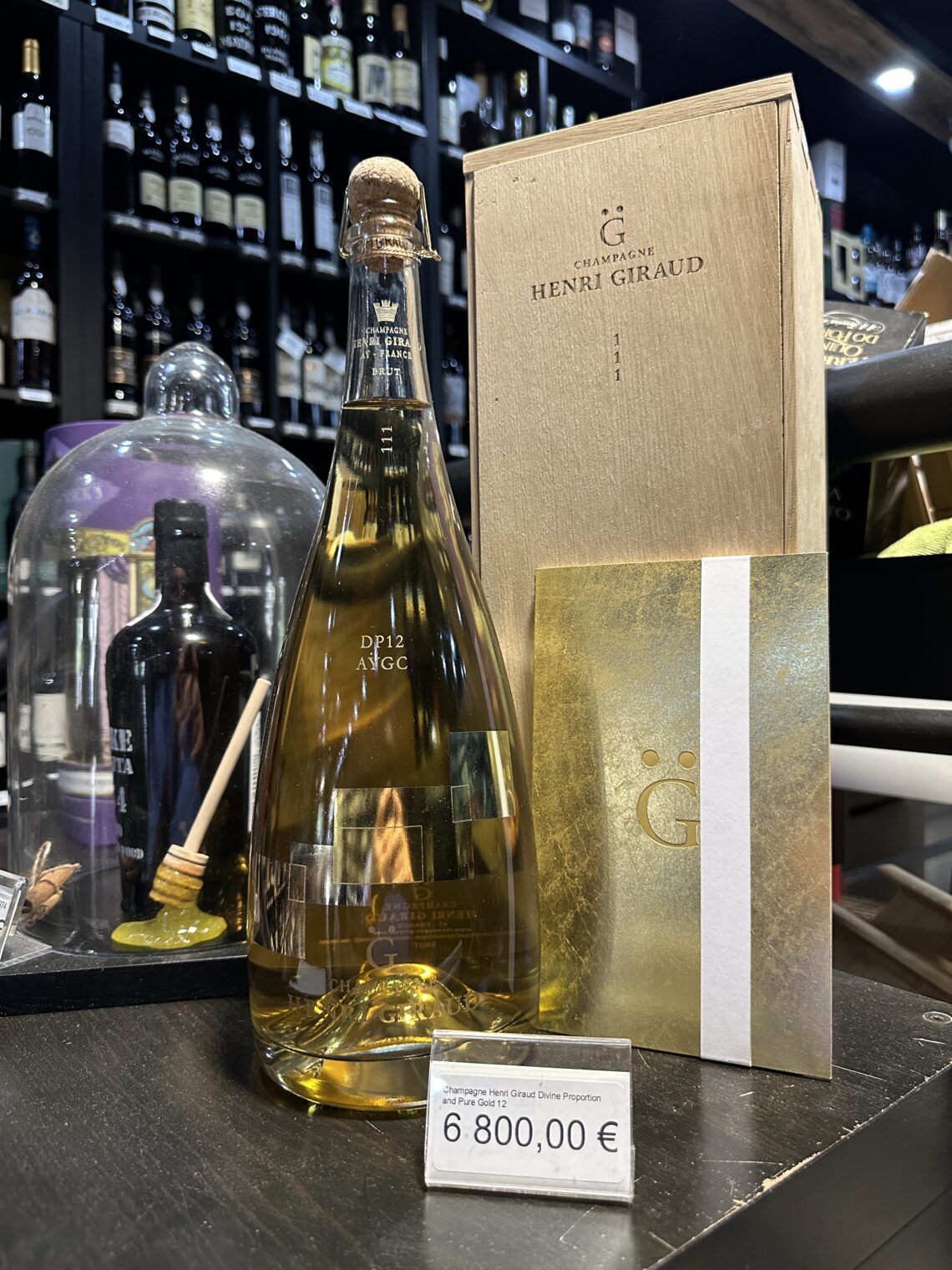
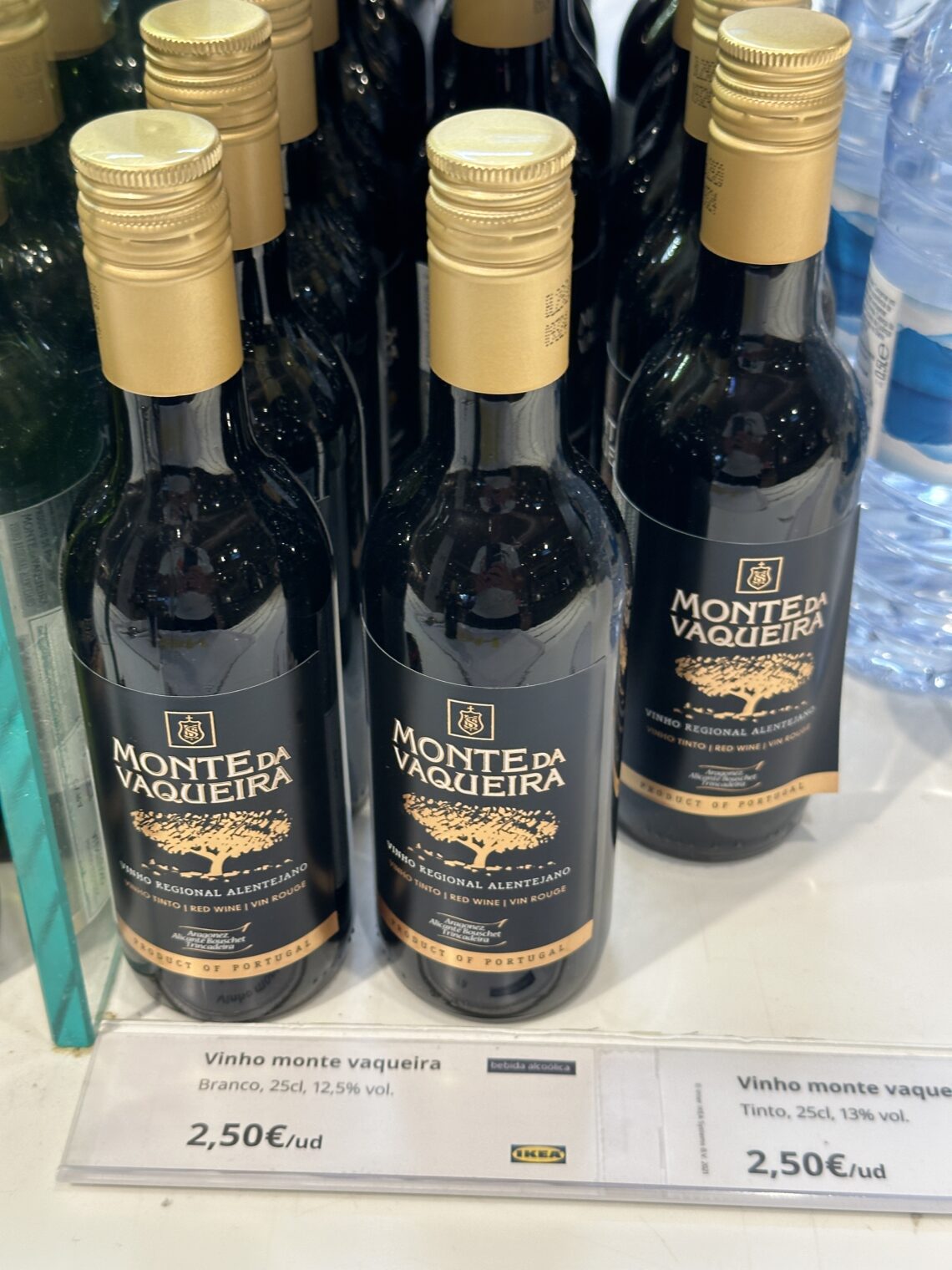

Aren’t the US authorities fighting a desperate war against unpasteurized cheese? (Assuming these cheeses be.) If so, that might explain it.
The wines on display were interesting, though I’ve little experience with Henri Giraud. Note the shelf with “RP 100” (Robert Parker 100 pts = max score) for some easy choices.
Furthermore, the Corton-Charlemagne from Domaine Romanée-Conti might be interesting, even though I’d guess you could get it more cheaply elsewhere and might also appreciate a red more (like the Echezeaux on the right).
The Domaine Armand Rousseau on the shelf below the DRC also seems nice indeed. One of the top producers I have seldom had the opportunity to taste.
Tom: That’s a good point on our government’s role in protecting us against Portuguese cheese. There is a limited amount of cheese that can be brought in, so as to enable American companies to make terrible cheese for $25+/lb. (see https://fas.usda.gov/programs/dairy-import-licensing-program )
And then, although there is no need to prevent teenagers with rifles from getting near Donald Trump, we certainly wouldn’t want cheese that started from raw milk to be allowed anywhere near our shores.
https://www.tasteatlas.com/best-rated-raw-milk-cheeses-in-portugal purports to be a list of just some of the dangerous cheeses of Portugal and it is quite a long one! In theory some of them should be legal, but in practice perhaps not:
https://www.foodandwine.com/lifestyle/why-americans-dont-get-eat-delicious-raw-milk-cheese (2022)
If you’re going to hold an EU passport then maybe we’ll get weights, volumes, temperatures, distances and altitudes in the metric system. Just teasing. I had to transform them in your “Serra da Estrela” post to get an idea of how high the highest peak in Portugal is and how warm it is in June.
Reminds me of someone manoeuvring a car in parking in the US. She was not really sure if the car passes without touching an obstacle, we made eye contact and I shouted at her, instinctually, without thinking, “no problem, you have at least 40cm margin”. Then I saw her expression and I understood that she had absolutely no grasp of the distance I had communicated. Then I shouted “more than on foot”, but she had already driven away.
> Reminds me of someone manoeuvring a car in parking in the US
LOL this European spelling isn’t doing you any favors.
> you have at least 40cm margin
One of the reasons metric never took off here is that it has no unit of measurement as useful as the foot. Also, Fahrenheit is superior to Celsius but that’s a debate for another day.
It depends of what you want to measure. If it is a couple of feet, then maybe you are right. But when it comes to thousands of feet, to indicate mountain peak altitudes or distances to the next freeway exit, then I think hundreds of meters or kilometers are more appropriate (or even miles! I have not figured out why freeway exit distances are given in thousands of feet). I was also surprised by the lack of popularity of the yard in the US, the closest unit to the meter. Feet or miles but not much in between. Surfaces are given in square feet (typically thousands or tens of thousands) but not square yards. It is not often that I need millimeters but there’s no good equivalent in the US, one needs to use really small fractions of an inch.
While their respective appropriateness to a specific task can be debated and is maybe subjective, I think the strong point of the metric system is the ease of conversion between its units. 12 inches a foot, 3 feet a yard, God knows how many feet a mile. 16 ounces a pound, 128 fluid ounces a gallon. Then the simultaneous use of different units, such as ‘she’s 5 foot 8′. The 8 then is not .8 of a foot, but actually .66, because of the non-decimal relation between inches and feet. So you need to know the relation between each pair of units in order to decide if 5’8″ is closer to 5′ or to 6’. It’s a little like the three Japanese writing systems used simultaneously compared to the Latin alphabet.
> If I’m going to hold an EU passport
How do you plan on obtaining one? Also did your fourth paragraph get cut off?
SN: I will fix that messed-up paragraph. Thanks. I was editing this every few days while on the trip and must have gotten confused while the kids were screaming about mistakes they felt that the refs were making in the Eurocup matches…
How will I get a Portuguese passport? By investment, I hope! I’m on their “golden visa” program. See
https://philip.greenspun.com/blog/2021/05/06/portuguese-stocks-or-lisbon-real-estate-for-the-next-five-years/
and
https://philip.greenspun.com/blog/2021/10/16/portuguese-stock-picks/
(probably I made the wrong decision; I think Lisbon real estate has continued to soar while stocks have gone up only with inflation)
https://archive.is/smNVk says “Portugal’s attempts to block wealthy foreign home buyers aren’t working as Lisbon house prices keep rising—past Milan, Madrid and Berlin”
But I hate owning real estate (fighting with an A/C condensate line drip right now; I think it is actually condensation on the outside of the PVC caused by having switched from a negative pressure air handler to a positive pressure one (puts cold air into the condensate line in addition to cold water)), so I shouldn’t complain about the gradual nominal price increase and the high dividend yield.
Definitely above blog commenter pay grade. Good & gather shredded cheese & power aid is the limit for the undiscriminating law firm unpartner.
For someone so against EU political/economic policies I’m surprised you’re not aiming for an Israeli citizenship and moving there. Also, putting your money where your mouth is for a change.
dth: What’s an “EU political/economic policy” that a person could be for or against? Are you talking about Estonia’s 0% corporate income tax rate or Germany’s 30%? (Estonia does tax profits when they’re paid out to shareholders.) Are you talking about https://en.wikipedia.org/wiki/Hungarian_border_barrier (“The number of illegal entries to Hungary declined greatly after the barrier was finished as it effectively abolished the entry to Hungary”) or Germany’s welcome mat for low-skill migrants? Are you talking about Poland’s ban on abortion care for pregnant people or Italy’s 12-week limit on abortion care for pregnant people? Romania’s 10 percent top income tax rate or France’s 55.4%? (see https://taxfoundation.org/data/all/eu/top-personal-income-tax-rates-europe-2024/ and note that there aren’t state/city income taxes so France’s rate is only a little higher than what an elite Californian might pay) In foreign policy, Spain’s recognition of Harvard students’ model nation (“Palestine”) or Portugal’s refusal to recognize the peaceful city on a hill?
Some consistency please, it seems you’re now saying the central planners of EU have no influence over the actions of constituent member states?
Also, poor choice of outdated examples further showing you don’t know much about EU. And again, I’m sure they’d love to have you on the peaceful city on a hill, better yet… in the wonderful city behind the Swiss cheese like tunnel riddled fence of the model nation. I’m sure your kids would love the peaceful, fully funded, mask-less open air school environment and you could set up a lucrative business with all the highly skilled, entrepreneurial labor force and free funding available.
dth: Of course, the central planners in Brussels have some influence, but it is less than our federal overlords in D.C. have. My response would be the same if you asked about “US policies” with respect to gender affirming care on children. There is a California policy and there is a Florida policy and those who agree with the California policy aren’t likely to agree with the Florida policy or vice versa. Same deal with child support. A plaintiff who sues a former sex partner in California could get $1 million/year tax-free. An identically situated plaintiff one mile across the border into Nevada would earn less than $15,000/year in revenue. Which one is the “US policy on child support profits”?
Circling back to Europe, a rich person who makes no effort to move anything into an offshore Dutch trust or Estonian corporation will pay his/her/zir/their “fair share” of income tax in Denmark, for example, and about $100,000/year flat rate in Italy. Which one is the “EU policy on making billionaires pay their fair share”?
I have never heard of that “Serra Gerês” brand, but their labels say the milk is not from Portugal (“País de recolha: UE” means it is from an EU country, most likely Spain, but maybe Bulgaria or Romania). If you like the “amanteigado” type, there are many types/brands, and it is typically from the region of Serra da Estrela. It is normally eaten by opening a hole on the top of the cheese and then using it as a spread on bread.
Wines in Portugal are often a blend of grapes, and more relevant than the grape mix is the region of origin. Alentejo is a staple for red, full-bodied wines, and it is difficult to go wrong. At €19/bottle you are being ripped off. From €5 upwards there is little difference. My recommendation for best value wines is Lidl. Their shops often have a decent selection (also many from Alentejo) and their prices are even better than Continente. Madeira wine may last longer than Port, but as you probably noticed in Continente, it is not very popular in Portugal (more for British palates, you’ll see only few bottles of Madeira vs many varieties of Port). Also, some Port some port lasts more than others. Reserva should be drank on the same day of opening, while Tawny and Ruby last a lot longer.
A reason Portuguese wines and cheese are not widely available outside Portugal (not just the US) could be because production is relatively small and mostly for the domestic market. Few products, except perhaps Port and Madeira wine, are mass produced for export. Also like in Spain, typically the best products are destined to the domestic market, since their customers are more discerning and know what they’re buying. Unlike Walmart taking a risk by ordering a large shipment of an obscure cheese that the American market may not be willing to try.
There is a fair amount of Portuguese wine available in NYC and it is usually good value. There is no shortage of good wine produced in the world and that is probably the best explanation for why there isn’t more sold in the US – that shelf space is limited, that wine in general is not a big part of US culture, that a lot of shelf space is taken by more familiar brands with labels consumers understand and can pronounce.
jdc: I’m more interested in the lack of cheese availability, but the Portuguese section of Total Wine, for example, has just a handful of different choices whereas a small wine store in Portugal might have 300 different Portuguese option.
Philip, here is an investment idea for your newfound motherland of Portugal: invest in some local vineyards to make kosher port and madera vines to export to North American markets. Kosher port and madera vines are sorely missing from US vine shops.
Are there notable local Portugese beers or hard liquor s?
perplexed: Making wines is a way for rich people to lose money, not a sensible investment for peasants! Separately, a quick Google search reveals quite a few kosher Port wines. Maybe there aren’t any Madeira wines, but I would have to live on Madeira to make them.
To judge by the signs in bars, Super Bock is the leading Portuguese beer, but I am not a beer drinker so I never tried any. Sagres is also popular. It looks like these can be purchased at Total Wine here in the U.S. https://www.portugalist.com/portuguese-beer/ says that, just as in the U.S., healthy profits were ensured by a wise government: “Under Salazar’s regime, the beer industry was heavily protected by the government and foreign companies were not allowed to set up shop in Portugal. This allowed two companies, Unicer – Bebidas de Portugal, S.A which produces Super Bock and Sociedade Central de Cervejas, S.A which produces Sagres, to own the entire Portuguese market with no real competition.”
Kosher wineries seem to be profitable, and those with supermarket shelf space seem to be hiring and generating revenue. And new ones pop-up every now and than. This is a growth market. Don’t expect cryptocurreny or technical ipo – like quick earning but could be good long term investment making a million or two in annual profits. Visiting Madeira is on my to do list.